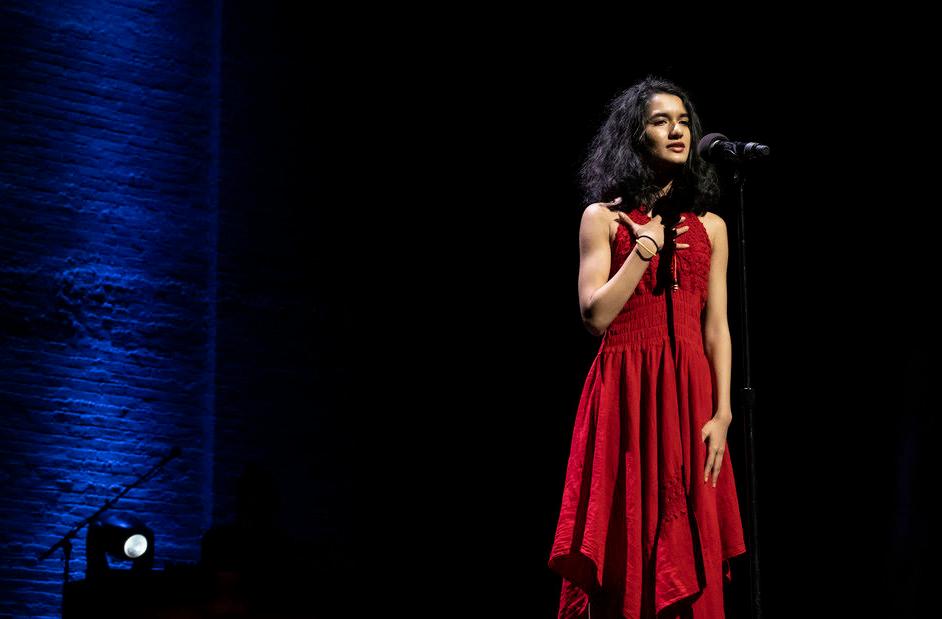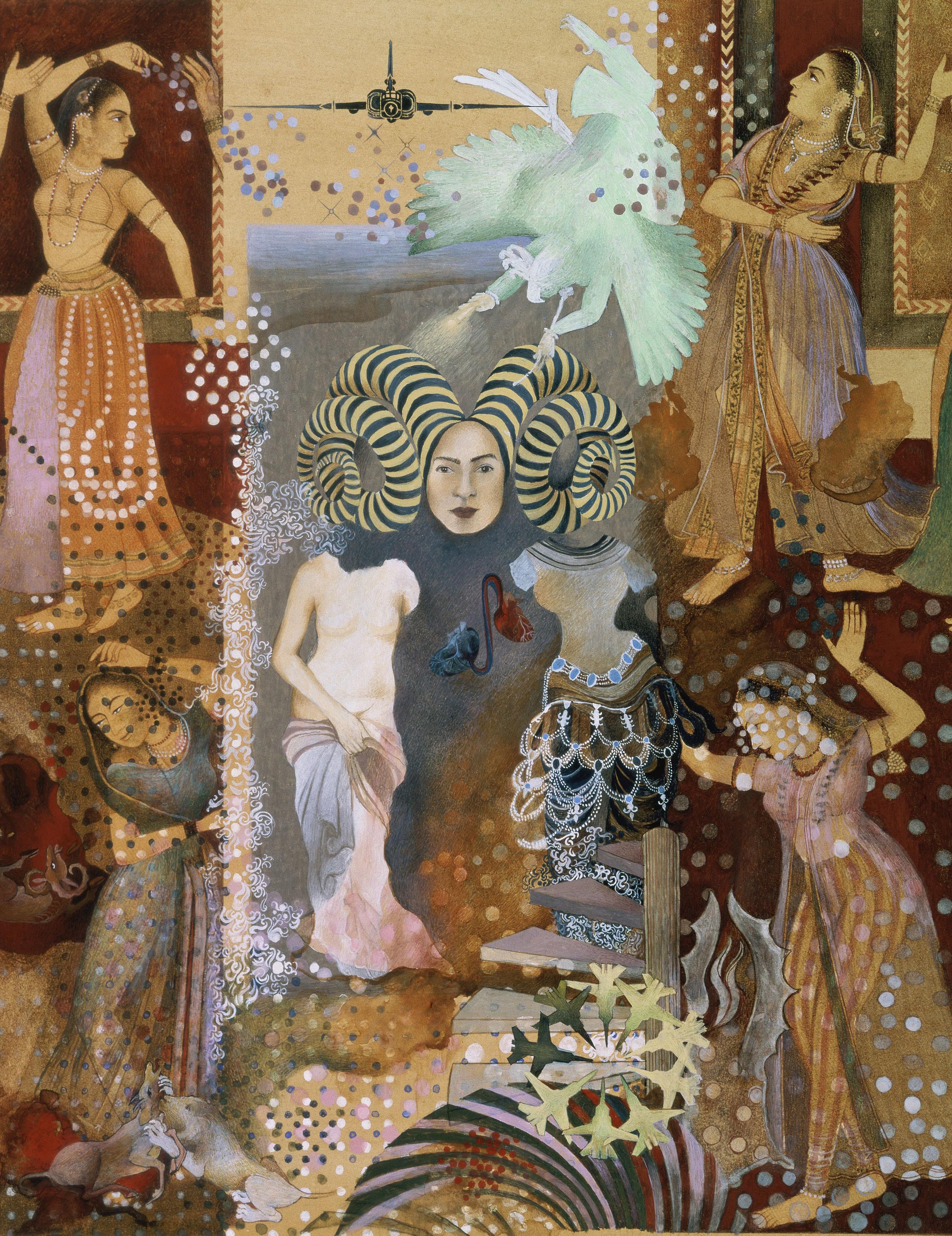
5 minute read
At 17, Meera Dasgupta Has a Way With Words
from SEEMA Magazine
by SEEMA
As she puts it, “We need many more female voices to tell authentic stories.”
THE 2020 UNITED STATES YOUTH POET LAUREATE IS A CHANGE-MAKER AND A FIERCE ADVOCATE FOR STUDENTS AND GENDER EQUALITY
BHARGAVI KULKARNI
At 17, she’s a wordsmith, change-maker, and a fierce advocate for students’ voices and gender equality. Meet Meera Dasgupta, the 2020 United States Youth Poet Laureate.
Dasgupta, a senior at Stuyvesant High School, is the youngest national youth poet laureate. A 2020 United Nations Global Goals ambassador, a Federal Hall fellow, and winner of the Climate Speaks program and the Scholastic Arts and Writing award, Dasgupta has also performed at several pres-tigious venues around the country. In a Zoom call with SEEMA, she spoke about her role as a youth poet laureate, her activism, her future plans, and about Amanda Gorman, the young poet who dazzled the nation at President Joe Biden’s inauguration.
LIFE AS A NATIONAL YOUTH POET LAUREATE
“The youth poet laureate has many opportunities, and there’s definitely some leeway in terms of what we can do, which is why no one’s tenure is the same,” Dasgupta tells SEEMA. Among other things, Dasgupta has published a book, writes a blog, publishes poems, holds workshops and gives interviews on different platforms.
However, some of her engagements have been affected by the pandemic.
“A lot of spoken words are [about] getting feedback from the audience – people clapping along,” she says, adding that performing virtually has its advantages.
“I have been able to speak with people who I wouldn’t have been able to speak with before,” Das-gupta says. She has also mentored a girl in South Africa in public speaking.
THE INTERSECTION OF POETRY AND ACTIVISM
“I really utilized my activism in spaces with womxn, empowering women within these spaces, and also within the intersections of my identity, not only as an Indian American, but as an Indian American woman in New York City – and in America,” she says. That pushed her to work “not only in the women’s movement, but also in climate justice, racial justice, different social justice movements.”
Calling herself “erratic,” she says, “If I see something that I feel is an issue in the world, I would send an email a second later.” She gives an example: “I saw someone on Facebook talking about mental health being affected by the pandemic. I emailed a senator a minute later, just randomly, to discuss that issue and to see if some positive change can come from that.”
Before she was a poet, Dasgupta participated in various advocacy groups. It was in elementary school that she says she first realized that she likes to work with others.
“I would always help people excessively,” she says. “I mean, when someone would drop a pencil or a scissor across the room… My activism definitely started as a result of that experience.”
THE POWER OF POETRY
“Poetry is very much story-telling in a way,” she says. “In some forms of art, the art itself, and the performance, allows people to take a different form of identity.”
Dasgupta has been told that she’s a different person on stage.
“I close my eyes and suddenly something else happens,” she says.
Dasgupta says there is a misconception that poetry is for an audience, but argues that it could also be a way of being vulnerable, and learning about oneself and healing.
Poetry helps with her activism as well. When she is writing, Dasgupta says, she learns “how to utilize certain words and lyricisms which can evoke a certain meaning … It has helped me in rais-ing awareness in civic engagement, uplifting youth voices in marginalized communities, within my local space and globally,” she says.
Dasgupta found her true calling as a member of the Stuyvesant Speech Team, interpreting and per-forming spoken word poems. She started writing poetry, or spoken word poetry, less than two years ago before becoming the youth poet laureate.
She recalls that soon after she had begun writing, a young girl in the audience asked if she could perform. Though not on the lineup, Dasgupta was allowed to read a poem about her time in the foster care system, and how that related to empowerment.
Dasgupta says, “It was one of the most powerful moments of the night.”
FUTURE PLANS
“More than what I am going to be doing in 10 years, I think more about who I am going to be,” Dasgupta says. “I want to be the person who continues to push boundaries, and to try to change the world.”
She believes that while New York City celebrates progressive values and pushes boundaries, there is much work to be done, “within traditional values and trying to find intergenerational conversa-tions.” She wants to talk more people in the country and abroad to “learn about this network of people who’re already doing the work and how I can help.”In college, she wants to major in political science.
ON AMANDA GORMAN
Dasgupta says she’s not surprised with Gorman’s “sudden ascent” after the performance on Inau-guration Day.
She says it was heartening that Gorman was recognized for her work.
“She’s been recognized for a long time by so many leaders within our community, but not within the general population,” she says, adding, “Not a lot of people knew what a National Youth Poet Laureate was – or even what spoken word poetry was – before Amanda. I would tell people about the title and they would say: ‘What is that?’”
ON BEING COMPARED TO GORMAN
“I try to consider myself unique,” she says, “but I definitely look to Amanda as an inspiration.” In April 2017, Gorman became the first person to be named National Youth Poet Laureate.
Dasgupta says that Gorman’s Inauguration Day poem was able “to instill hope within so many people during a time which has definitely been a transitional period, not only in America, but glob-ally, not only in terms of the pandemic but in terms of unification and acknowledgment of history.”
To see someone on the stage who resembles so many in her neighborhood has allowed her “to find spaces within my own circle and spheres,” she says. “Perhaps one day I will be at that stage as well ... and I’ll be someone who can inspire others.... Rather than see who I’m going to be, I try to find people who I want to stand besides some day ... People like Amanda and Kamala Harris...”
HER ADVICE TO YOUNG WOMXN
“When I was younger, I never saw people like me or who look like me in positions of leadership,” Dasgupta says. “Because it was something I never saw, I never thought that I could be in a posi-tion that I am in today.”
She urges Indian American girls to find their passion.
“Try to educate yourself, foster that curiosity, and read the words of people who came before … Also [those] of people who are from other countries,” she says. “I feel like, being in this bubble, it is kind of difficult to get out ... Find all these aspects for yourself.”










